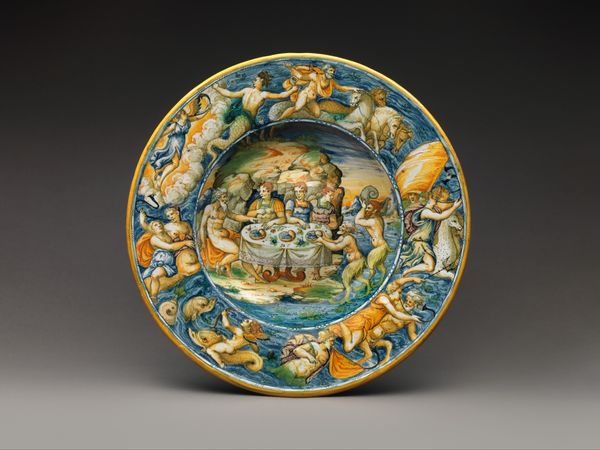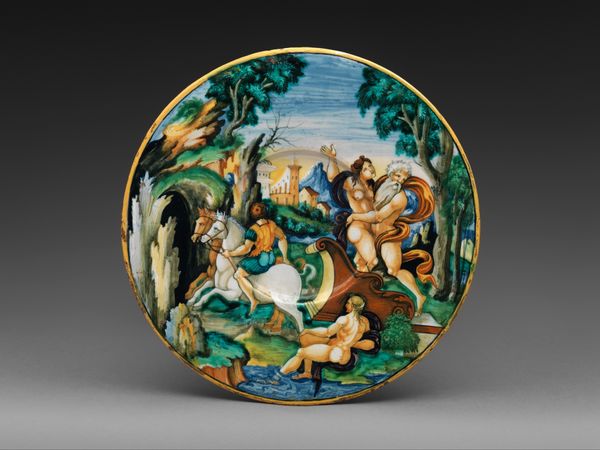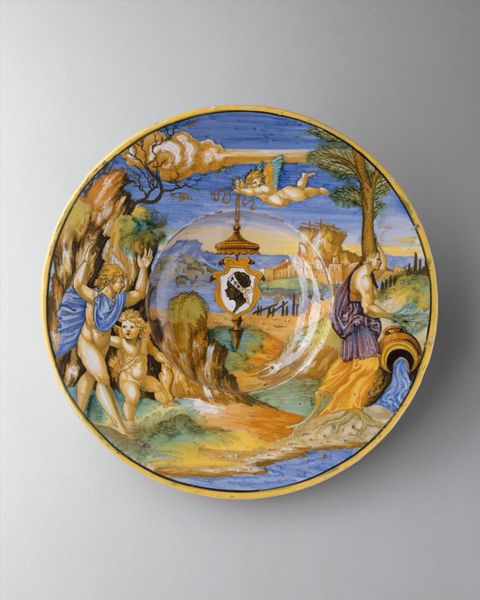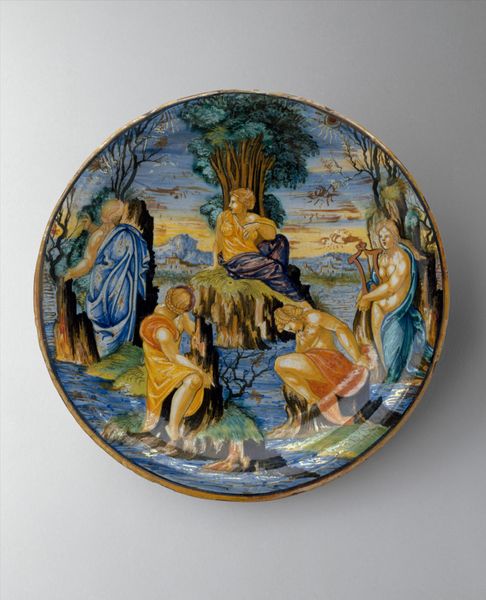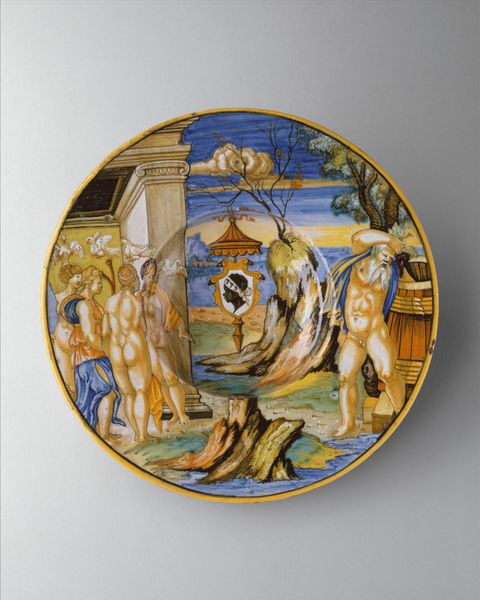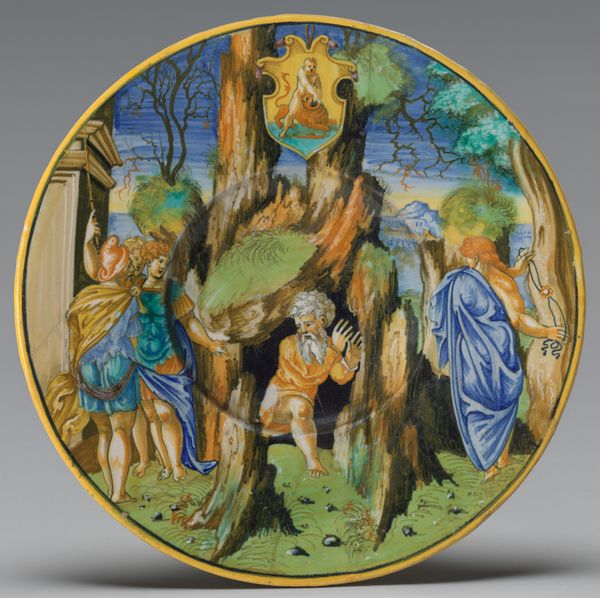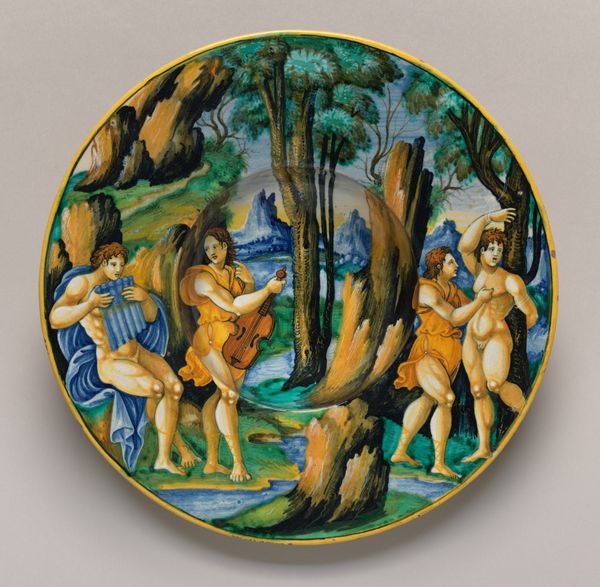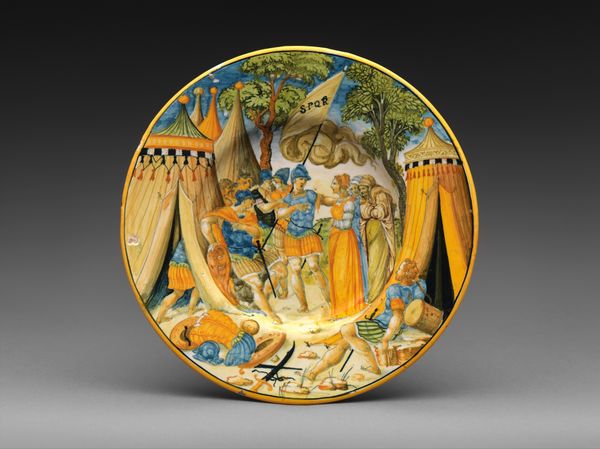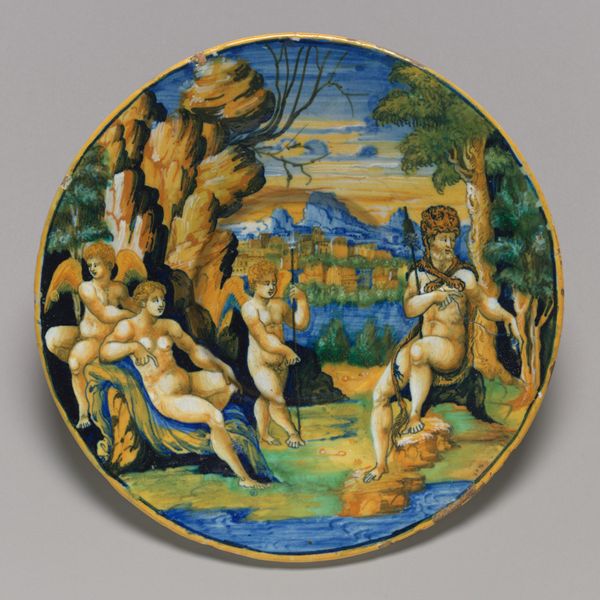
ceramic, earthenware, sculpture
#
narrative-art
#
ceramic
#
figuration
#
earthenware
#
sculpture
#
ceramic
#
men
#
food art
#
earthenware
#
history-painting
#
decorative-art
#
italian-renaissance
Dimensions: Overall (confirmed): 2 3/8 × 17 in. (6 × 43.2 cm)
Copyright: Public Domain
Curator: This intricately decorated earthenware dish, crafted by the Fontana workshops between 1550 and 1565, offers a window into Renaissance interpretations of classical narratives. It's entitled "Dish with The Discovery of Achilles". Editor: The visual feast is undeniable. So many figures, rich colors…but it feels theatrical, staged. Is that the nature of history-painting from this period? Curator: Absolutely. The workshops catered to wealthy patrons who often used these narrative scenes to signal their own erudition and refined taste. It depicts a very specific moment from the story of Achilles. His mother, Thetis, hid him amongst the daughters of Lycomedes to prevent him from participating in the Trojan War. Odysseus and Diomedes are tasked with finding him, presenting gifts, and when Achilles betrays his identity by reaching for a sword rather than feminine wares. Editor: Right, so we have the central figure's unveiling, then. It raises interesting questions about performativity and concealed identities. Achilles is forced to shed his guise. But look closer at the male gaze so prevalent in this representation! A very deliberate act to reaffirm ideas around male identity, surely? The decoration framing the inner painting is very telling, and typical of the artifice surrounding similar social portrayals of males. Curator: Certainly. The visual style borrows heavily from contemporary painting, attempting to elevate the status of ceramics to the same level. Note the sophisticated use of color and the complex arrangement of figures in a landscape. This speaks to the ambitions of the Fontana workshops. But as we think of this art object existing within a household setting, that adds an interesting layer to these ideas surrounding identity and taste. This dish served as not just an art object, but also a declaration of belonging, if you will, and likely provided constant talking points among visitors. Editor: The level of craft here, the fusion of form and message…It's striking how everyday items became vehicles for power during the Renaissance. Thank you for bringing new dimensions to an everyday piece of foodware. Curator: And thank you for calling attention to how this one decorative dish tells an enduring story of how art performs within structures of power.
Comments
No comments
Be the first to comment and join the conversation on the ultimate creative platform.
